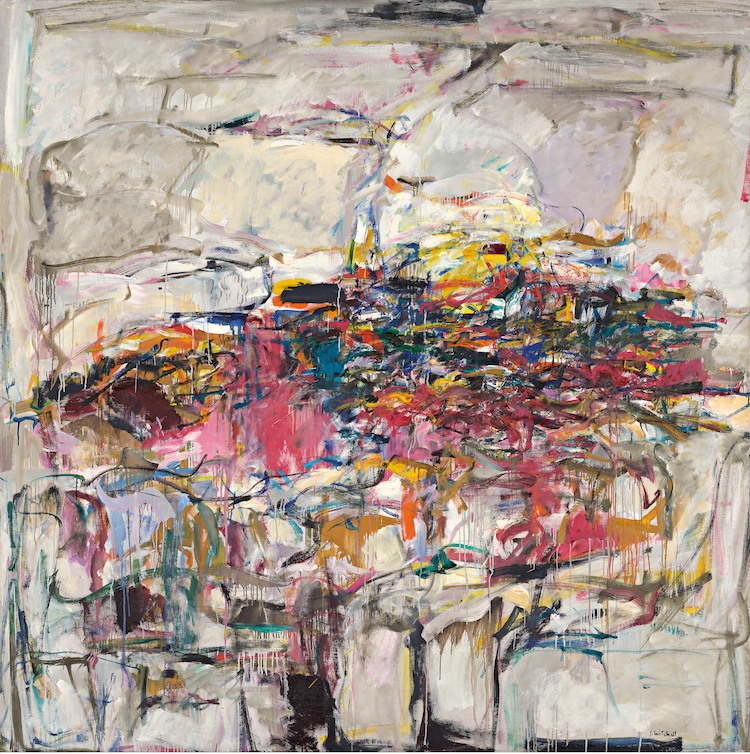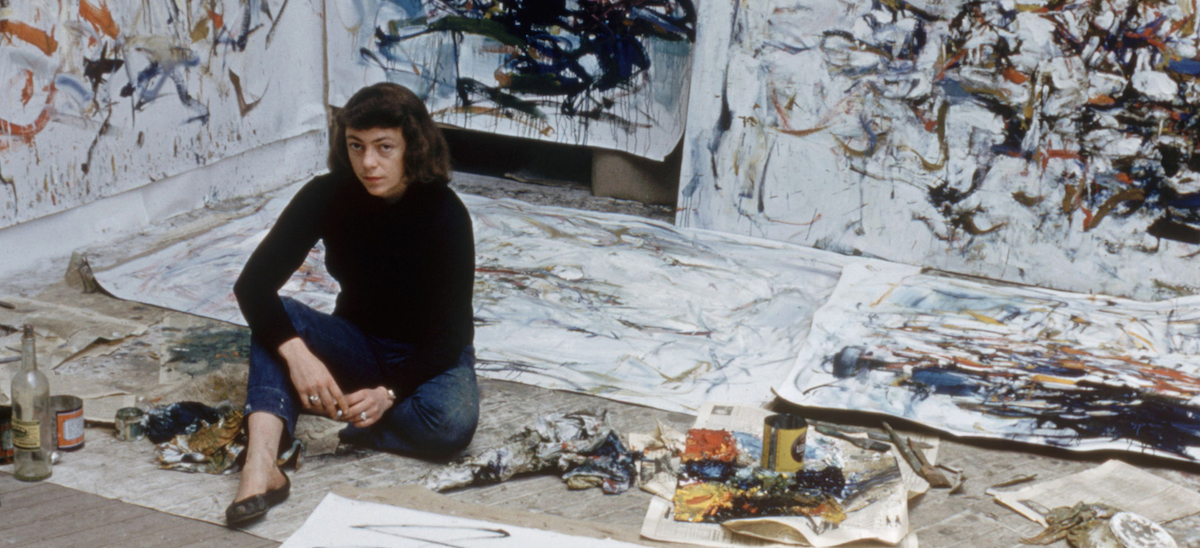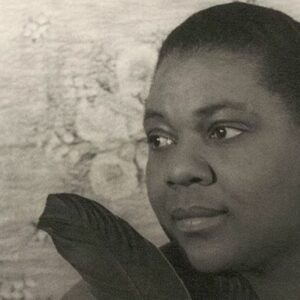The cab driver was a cute young man with a rasping voice. He picked me up at Toyota and he was taking me way across town. Last day in town doing my errands.
The guy had an accent, and I tried to locate him, being self-excited about what a world traveler I am, and how political. He grew up in Brooklyn.
We philosophized. How is your day. Each day is pretty good he espoused a casual gratitude, what is ever so bad. It’s good, he smiled. Excuse me. His phone was ringing. Do you mind if I take it, no I allowed just as long as we get there. He spoke to someone. My cousin died, he told me when he got off.
I’m sorry. Was it sudden. Was he sick. He hesitated. He was shot. Silence filled the cab. I’m sorry I said helplessly when I got out. Anything I said was impotent, impossible in relation to his news. I continued my day.
When Shaw wrote Saint Joan, he never knew her. “He had never seen her walk, never heard her talk, could never have been haunted by any of those infinitesimal, inimitable tones, turns, tics, quirks, which are different in every human being . . .” wrote James Baldwin who had known Malcolm X and was struggling to write a screenplay about him after his death, and apparently it was really hard.
I never met Joan. It strikes me that I could have met her and more than once I’m sure we were in the same room. She visited Joe LeSueur who lived right around the corner from me on Second Ave and Robert Harms who’s a painter and a friend met her there for the first time one night in 1982 and I will forever insist I was home that night and if my phone rang of course I would have come running.
I’ve stood outside her building on St. Mark’s Place, the New York address she lived in the most and I’ve thought about the building. It’s a nice one. I think of it as Zen because of the gates on the first floor windows that pass beyond simple function into desire. The building is cool, gray green, which is probably not true, but I’m painting from memory. Baldwin says Ray Charles said tell the truth as an anthem, but that’s easier in singing than painting. Right? Does painting tell the truth. Poetry doesn’t, I’ll say that.
It strikes me that I didn’t meet her because of misogyny. Imagine misogyny in New York. City full of us (women) loving and bouncing off each other. Moving around each other, ignoring each other, meeting each other a lot, straight or gay, despite men. As long as she lived the men I knew who knew her would say Myles, or hey Ei-leen, have you met J-O-O-A-A-N. Then there was a kind of silent double take, like they were imagining what that would be like and it made them laugh. What did they see. I felt it, for sure. And it gave them pleasure.
I’m talking about the terror of Joan, or perhaps the terror of Eileen. The terror behind all artists, probably humans. Female artists for sure. It was impossible to know which terror they meant. Because the laughter at our imagined encounter meant that this was something that should never happen. And so it did not. The laughter meant these creatures would claw at each other somehow, and it wouldn’t be fun. Or it was more fun to imagine. There was a particular architecture to the imaginary meeting, a building that couldn’t get built without some fur flying, some skin, some blood on the floor. Some body parts for sure would wind up deep in the cement. That was the legend, the myth. I always of course assumed it was about her, though I didn’t ignore the snark and go ahead and find Joan Mitchell for myself and say hi I’m Eileen, because obviously I knew what they meant.
We all lived in New York. Every woman is one of “them” right. We come to the city fangs out, and everyone tells you not to act that way. Don’t be a monster, a shrew, a bitch. I love this big horny red painting (City Landscape) because it’s bitch work. It’s tooth and claw.
 City Landscape, 1955. Oil on linen, 80 x 80 in (203.2 x 203.2 cm). Collection Art Institute of Chicago © Estate of Joan Mitchell.
City Landscape, 1955. Oil on linen, 80 x 80 in (203.2 x 203.2 cm). Collection Art Institute of Chicago © Estate of Joan Mitchell.
Took a hot bike ride one day in late July around New York to look at all of her apartments.
First place she lived was 267 West 11th. I admire the newel, the curling metal grip of the balustrade, the handrail leading up to the fancy ass door of the building. By that I mean an extremely ornamental black one, all kinds of braided sunbursts, tree escutcheons and raised stuff on it. The door had to have been there then, almost seventy years ago. She moved in the week I was born! When Joan Mitchell walked up to that building she probably said wow, I’ll take it. Barney look at that door.
Turns out there’s a tiny metal gate to the right of the building, itself full of grates and scrolls, and it leads to the single-story building behind 267 West 11th, where Joan and Barney actually wound up living. There’s a landmark case going on right now, and if it goes the owner’s way the small building will soon be a teardown.
In New York I think at this same time Joan Mitchell lived with a brown poodle named George. As well as Barney Rosset.
The apartment’s near where St. Vincent’s Hospital used to be. It’s loaded with churches, two red ones on her block and as you walked toward Greenwich Ave you can see the green spire of the Jefferson Library over on 6th Ave, right next door to the Women’s House of Detention, richly described by Tom Wolfe but for everybody else it was just part of the scene.
St. Vincent’s was many different things. In the ’70s it’s where you didn’t want to go. Very violent lots of shootings in that emergency room. Later, it was the AIDS hospital. Christine Quinn a city councilor who aspired to be mayor let her girlfriend a realtor sell it. Huge mistake. It’s why she didn’t win. So it’s gone.
Greenwich Avenue’s sidewalk is interrupted by grilles venting the subway below and the rumble of the trains is a lot of what you know about this street apart from its angle, Greenwich Ave veering always, which is useful since everything else (Charles, Perry) comes off of it and it’s heading east.
59 West 9th was on a tree-lined block. The building was branded with “1839.” It had black gates round the stoop. People used to sit out there on summer nights drinking beers. Now only the tenants can sit. This apartment’s right around the corner from the Women’s House of Detention, now long gone but definitely there when Joan stepped out on the avenue to get the subway, catch a cab or walk cross town she could hear those women scream. This was the last stop before she and Barney broke up.
He stayed on West 9th and Joan moved into her studio at 51 West 10th, an address which now is totally gone. It was apparently eaten up by the Peter, green and nondistinctive, which covers about three addresses now. My friend suggested it’s a translation of the Pierre uptown which is so New York in its sheer tackiness and it is pretty funny. But do developers have a sense of humor?
Across the street from her gone apartment there’s one building that is blue and orange, and parked in front of it, twee-ly enough, is a scooter of the same two bright colors. It’s not good. It’s Pappagallo bad. Next to it a white building bears a roughened sign that says GROSVENOR PRIVATE BOARDING STABLE.
I got pretty excited about this, wondering if Joan rode, and here. Wouldn’t that be cool and she was a jock. But the stable was actually gone by the end of the 19th century so the sign is merely for charm. Edward Albee lived there after he made some money on Who’s Afraid of Virginia Woolf which happened in 1962.
But they also I think wouldn’t have liked each other and Joan would’ve been gone by then.
I began wondering if any old stones from the earlier buildings made the Peter. Of course there’s a word for that phenomenon, the repurposed bricks, here it is: spolia. Because it was once a stable street I thought about cobblestones which were largely designed for the size of horseshoes (4 x 5 inches) so the horses would be secure as they stepped.
You can’t think about cobblestones and horses without hearing them in your mind somehow if only from movies.
Only 15 miles of cobblestoned streets remain in New York today, unlike 1949 when there were 140. So many of these addresses of Joan’s are in prime cobblestone territory. Greenwich Avenue must have been cobblestoned. The east village was, 2nd Ave. She was a drinker, and I’m thinking of the sound and the reality of walking home drunk on cobblestones talking loudly about the night. And being young. Joan painted City Landscape when she was thirty, really a perfect age. For a woman, having a little bit of authority then.
In a 1957 piece called “Mitchell Paints a Picture,” Irving Sandler says that she lived in a 4th-floor walk-up on the lower east side, which is what they called it then.
From that I know she lived high which I bet she always did, which will take us in a minute to Chicago. But I also think Sandler was a friend because the walk up sounds poor and I can’t help thinking that not only was her gender a problem, as a young female painter, but her wealth. But the combination plus the love of a man caused her to move to Paris just like James Baldwin (who I and all of New York are reading now) who I also think she wouldn’t have been friends with though they had a lot in common I believe. They shared a timing, a discomfort, an analytic. I think both of them understood the limits on who they were and when they were. New York was his home, it wasn’t hers, but both of them for different reasons just as compelling had to get out.
Joan as I imagined liked to get down and dirty but she didn’t want to live there. But that’s New York.
This brash pancake. All those blocks of colourless sections invaded by tiny runnels of colour (pools of rain). Wonder what to do with the muscularity, cause something pedestalizes, it slows everything down right beneath the splashing wad of colour.
Think furniture: is it a chair, a body, a lap. Stand back. A fountain. I don’t mean so much to see things but to describe their effect. I’ll say it. It’s such physical work. Years later in France she’d go outside and absorb the light and then she’d come back inside her studio. It’s why she liked dogs. They had it all.
Here she squares the thing off almost to give elbow room to the portrait, the red profile, this battering bash of colour—what is it, a landscape, an inventory of the feeling of a place, an infernal busyness not a noun but so many people around, the acts, such blaring, the ever-incessant calendaring, seasons, the self, always the need. It’s such a human painting.
The traffic up above (this is imaginary) trimming the shape.
First admittedly I thought the subject of City Landscape was the lake, cause I was in Chicago, but no it (the painting) is definitely New York: the river, rivers, and the sky upside either or the other hanging down.
Then there are all those bars, these clumpy slashes, black on top measuring time, also beneath the mess and it, its heart, its bunched up maroon beating heart, it has raucous heft. And when you think of it—walking through the city (cause the painting holds everything), the various lit scenes, dim, radiant, actually finally (truly the worst word in the world) creative. The city is creative. But Joan felt squeezed. This is that. It’s a party but it’s also a bright ripe incredible squeezure. Who can do this dance exactly.
One becomes drunken. I mean how many dead men are walking around. City full of ghosts. Bright, sneering, trashy color, that’s Joan, inexcusably exact, a source of upending forcefulness.
The gesture was pointless, but you have to put your body through the work to not be a ghost.I look to the left and the right standing in the Art Institute of Chicago. Am I allowed to take a picture. It’s something I’ve been thinking for a while. Was there a Black Joan. A Black Joan of Arc. Condola Rashad played her on Broadway in 2018. I’m staring at that time code again (the black thing on the top, and blackness in painting is power) when I first thought “clouds,” if it’s not this city. Argh, of course not. Not Chicago, it’s New York. It’s America. Looking at clouds, the dirty flower, rivers, the fist. Not so much a heart. A fist. Think muscular. The cream advancing to the bottom, then she bends the J of her name like an L. It hovers like a sign without import above that small swath of black holding up. Just holding, holding.
Meanwhile all the docents are waving around. I pull back to admire the pillows, the collages, the tiles of her background, these units that forge the incredible squalor called City Landscape: this.
It strikes me that this beautiful painting is ugly.
I mean at first I thought since I was here I would write about her great painting The Lake, but then I learned it’s not here, it’s in a museum in Japan, and they are renovating, so The Lake is in storage.
Peter used to live in New York. A lawyer, he once dated a friend of mine, Anne, and today I ran into him on Halstead. We decided to get a drink and went to one of those big-view places, Chicago’s loaded with them. We went to this top of a building called 360 Chicago. It was night and we saw it of course, Lake Michigan, like a gilded scar, a bog with traffic streaming (it sizzled) like a single sprawling limb, and that made Joan want to paint when she was young day and night most likely and all year it changes.
I found a way up into the building where she lived. Lo! One “unit” was available. The young agent, Harry, enthusiastically took us up. I’m with a Chicago artist, Karolina Gnatowski. We wandered its endless procession of rooms, and always there was that big blue sucker down there, leering, on the lit side of that apartment. I leaned my hip on several casements, kneeling, stretching with my phone and notebook, trying to get what she saw.
The gesture was pointless, but you have to put your body through the work to not be a ghost.
Manhattan Island is pretty much shimmer all day long, we manage to live in the effect of that echoing light.She saw a blue lake. It was a feeling. Weirdly, today or yesterday was Joan Mitchell’s birthday. I thought of that picture of her diving into a pool. Phallic woman pierces the pool. The lake is just out there. I will paint. Probably a rich girl’s need to escape. Not just breaking the surface, but making it. It’s either that or into the ether.
Harry hovered for a while, then he left, he said feel free so after a while as we began to leave I kept stopping the elevator at each funereal entrance, gold yellow brown, there were twelve floors, each as big as a football field and each entrance different yet you couldn’t be more staid. Clearly the rich prefer to be dead. Each plant each pot, all had its own deep suburban theme. And of course while we ogled each floor (I took pictures) we held the elevator hostage forcing the tenants to take the freight elevator. Harry flamed at me later on when I thanked him for the access. He put me in my place. I thought you were legit. Back to New York where we are a bunch of bastards. Past the river, leaving the city, but always coming back.
Manhattan Island is pretty much shimmer all day long, we manage to live in the effect of that echoing light.
What’s that? River light he said and just think of the action of two moving bands of water reflecting the sky, tossing that up into the air.
Though the buildings broke it, the skyscrapers were named after the tallest mast of a ship too damn many ships now but if you look at the right time of day down the right street that’s shooting across the island you can see it still almost green like Joan’s painting hovers violently true. An incantation: light the day and the suffusion cooling as you head toward the river at dusk in summer. The city empties and moves toward the edges, supple and slippery and those squares of greenish and stained husks of color support, her painting it, its wavering musculature.
There’s just one last thing to say about Chicago: it wants to tower and see its own single body in flames like a saint and the wind comes down from the north and that’s in this painting too a high grandiosity against the plains whereas it takes a certain kind of intelligence, New York does. Really, here we’re just all pushed around like cattle, here we either splay or play. So the painting’s both. Both cities now.
I do it from memory now the painting and the island I remember framed by the two rivers, early mapmakers named both shores Manahatta, a double, but they were just copying something wrong from earlier as the heated city exploded into a raggedy exaggerated confection of pain, enjoyment, embarrassment, crisis, and commerce.
O you who take cabs up and across the island, you’d def be smoking in one though we don’t do that anymore. Joan did. You could just take a checker. Flip down the seats, open the windows, smoking your cigs, everyone pile in.
David Rattray told me long ago (in the 20th century) that Manhattan meant “isle of general intoxication” because the white people gave the Native people whiskey but it’s actually not true. We have better indigenous translators now. It actually means “the place where bows are gathered.” Manhattan (before contact and still for a while) had a lot of hickory trees, which are perfect for that purpose. Making bows not arrows. Arrows are made from a single branch and a different wood. Inwood Hill Park remains an old growth forest, and there’s part of the original salt marsh there which used to surround the island and up there are still some of those very same trees, the ones since from before the arrival of the Dutch. It’s where you’d go to get your bow, Joan did, and left.
This city landscape is nothing but social. It’s the direct approach of somebody giving you flowers now let’s go out. It’s the bloodied road called Broadway that once was an Indian trail.
Brooklyn’s over here possibly under the painting there’s no that’s west and this is north. There’s a thrust to the painting, so this is positioned, positioning.
Did you know the Carnasee Lenape were the original tribe never mind the punk clubs in the ’80s nights at Dave’s Luncheonette on Canal after the Mudd Club but I don’t have a cent. Take a boat at the tip to get off Manahatta, try it one night late on the water the greatest relief imagine coming for a solid century with no visas no green cards by the way hordes kept storming its colors. Gate to come or gate to go? Joan left. Sort of. Every horse falling in Five Points and someone sticks a handbill on the poor dead animal’s body and began thrusting flyers into the crowd there gaping here’s your next opportunity, a deal. In London at the Tate we bivouacked this way and that everyone excited to see one another, a crowd this local monster here this town of coteries would actually be happier outside smoking I hate a crowd everyone says it and dives back in or on to the next. Uncontainable probably cause the city’s not a swarm, more of a slice. This squirting island. We are squeezed like that small fish grasped upside down shimmering within our own screaming limits, shivering, caught in the air that’s the firmament so it’s nothing but want.
__________________________________

From Joan Mitchell edited by Sarah Roberts and Katy Siegel. Published by Yale University Press in association with the San Francisco Museum of Modern Art in 2021. Reproduced by permission.
Lead image: Joan Mitchell in her studio at 77 rue Daguerre, Paris, 1956; photo: Loomis Dean/The LIFE Picture Collection/Shutterstock



